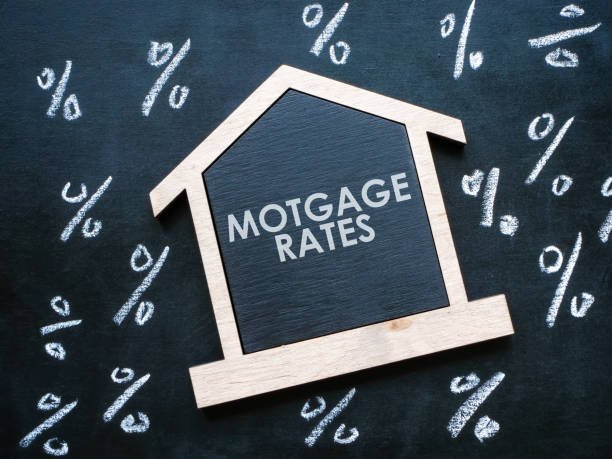In the world of finance, the choice between fixed and variable interest rates is a pivotal decision for borrowers. Understanding the nuances of each option is crucial for making informed financial choices that align with one’s goals and risk tolerance.
Understanding Fixed Interest Rates
Definition and Mechanism
Fixed interest rates are a stable choice for borrowers, providing a consistent interest rate throughout the loan duration. This predictability can be advantageous for budgeting purposes, offering a sense of financial security.
Pros of Fixed Rates
One of the primary advantages of fixed rates is the stability they offer. Borrowers can lock in a specific interest rate, shielding themselves from market fluctuations. This makes fixed rates an appealing choice for those seeking long-term financial predictability.
Cons of Fixed Rates
However, the downside of fixed rates lies in their potential inflexibility. If market interest rates decrease, borrowers with fixed-rate loans might miss out on potential savings.
Unveiling Variable Interest Rates
Definition and Mechanism
Variable interest rates, on the other hand, fluctuate based on market conditions. These rates can change periodically, exposing borrowers to the dynamics of the financial market.
Pros of Variable Rates
Variable rates often start lower than fixed rates, presenting an opportunity for initial cost savings. Additionally, if market interest rates decrease, borrowers with variable rates can benefit from reduced payments.
Cons of Variable Rates
The inherent risk with variable rates is their unpredictability. Fluctuations in the market can lead to increased interest rates, potentially impacting borrowers negatively.
Factors Influencing Interest Rate Choices
Economic Conditions
The broader economic landscape plays a significant role in determining the attractiveness of fixed or variable rates. Understanding the current economic climate is crucial for making an informed decision.
Personal Financial Goals
Borrowers must align their interest rate choice with their financial objectives. Whether seeking long-term stability or short-term savings, the decision should reflect individual financial aspirations.
Market Trends
Staying abreast of market trends and interest rate forecasts is essential. Timely decisions can be made by observing and analyzing the prevailing market conditions.
Historical Trends in Fixed and Variable Rates
Impact of Economic Shifts
Examining historical data provides insights into how fixed and variable rates have responded to economic shifts. This analysis aids in understanding the patterns that may influence future trends.
Long-term Stability Analysis
Comparing the long-term stability of fixed and variable rates can guide borrowers in selecting an option that aligns with their financial goals over an extended period.
Decision-Making Strategies for Borrowers
Assessing Risk Tolerance
Understanding personal risk tolerance is crucial. While fixed rates offer stability, variable rates come with a level of uncertainty. Borrowers must evaluate their comfort with potential fluctuations.
Evaluating Loan Duration
The duration of the loan is a critical factor. Short-term loans may benefit from variable rates, while long-term loans might be better suited for fixed rates.
Financial Planning Considerations
Integrating interest rate choices into broader financial planning is essential. Borrowers should consider how their decision aligns with their overall financial strategy.
Real-Life Scenarios: Case Studies
Success Stories with Fixed Rates
Exploring success stories where borrowers thrived with fixed rates highlights the security and peace of mind that this option can provide.
Challenges and Triumphs with Variable Rates
Conversely, examining challenges and triumphs of borrowers with variable rates sheds light on the potential risks and rewards associated with this dynamic choice.
The Role of Financial Institutions
Lending Policies
Financial institutions play a pivotal role in shaping the borrowing experience. Understanding their lending policies can aid borrowers in making informed decisions.
Customer Support and Guidance
Access to reliable customer support and guidance from financial institutions can significantly impact a borrower’s ability to navigate the complexities of interest rate choices.
Future Predictions in Interest Rate Trends
Expert Opinions
Seeking insights from financial experts and economists helps in anticipating future interest rate trends. Expert opinions provide valuable perspectives for making proactive decisions.
Anticipated Market Changes
Staying informed about anticipated market changes enables borrowers to position themselves advantageously. Adapting to these changes is vital for long-term financial success.
Tips for Effective Loan Management
Refinancing Strategies
Exploring refinancing strategies allows borrowers to optimize their loan terms based on evolving market conditions.
Adapting to Economic Shifts
Remaining flexible and adapting to economic shifts is crucial. Borrowers who can navigate changing circumstances with agility are better positioned for financial success.
Conclusion
In conclusion, the choice between fixed and variable interest rates is a multifaceted decision that demands careful consideration. By weighing the pros and cons, assessing personal financial goals, and staying informed about market trends, borrowers can make choices that align with their unique circumstances.
Frequently Asked Questions
- Are fixed rates always higher than variable rates?
- No, fixed rates can sometimes be comparable or even lower than variable rates, depending on market conditions.
- Can I switch from a fixed to a variable rate during my loan term?
- In some cases, borrowers may have the option to switch, but it’s essential to understand the terms and potential implications.
- How often do variable rates change?
- Variable rates can change periodically, often in alignment with broader economic shifts.
- What is the typical duration of a fixed-rate loan?
- Fixed-rate loans can have various durations, ranging from a few years to several decades.
- Is it possible to predict future interest rate trends accurately?
- While experts provide insights, predicting future interest rate trends with absolute certainty is challenging.
